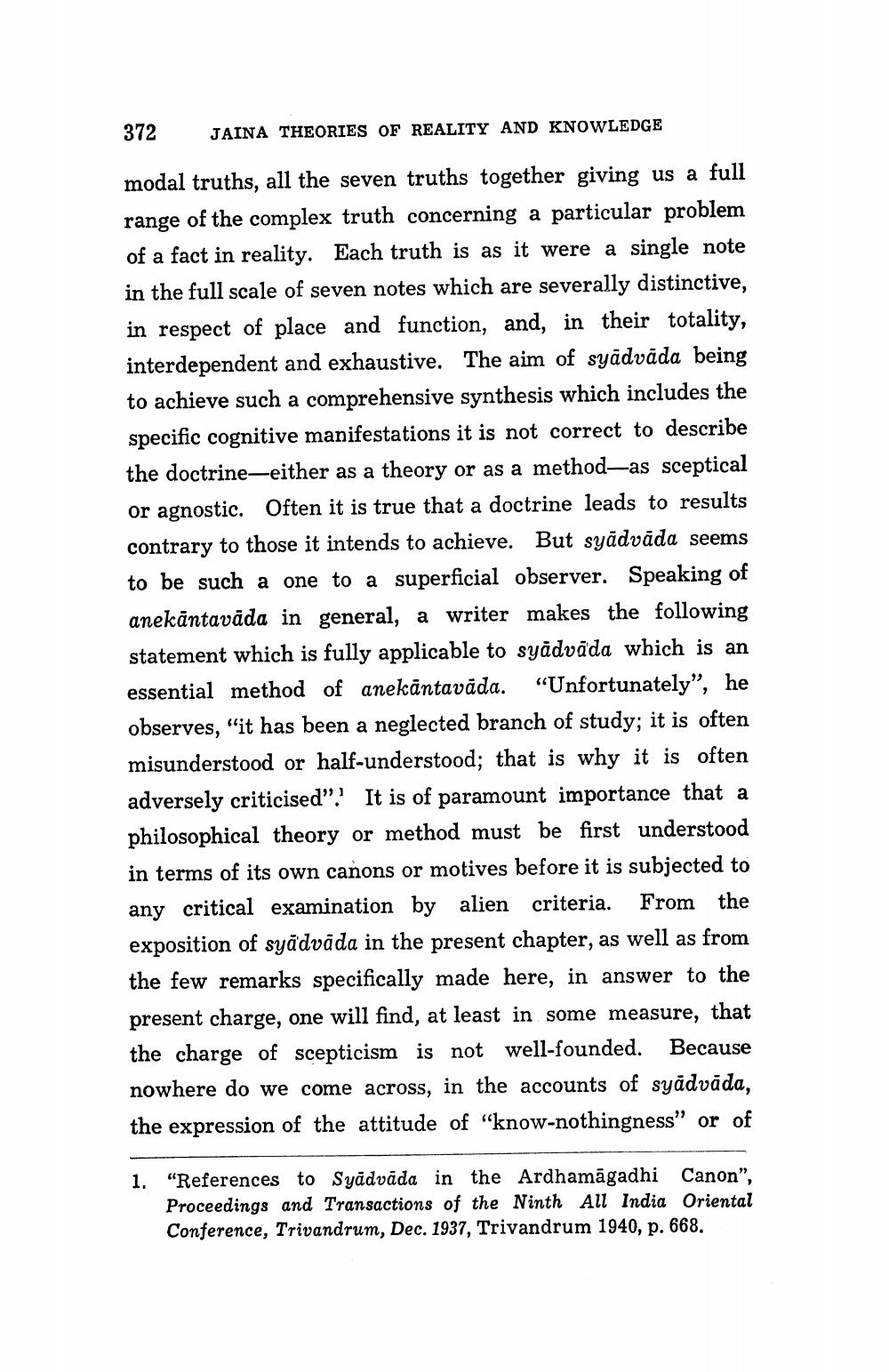________________
372
JAINA THEORIES OF REALITY AND KNOWLEDGE
modal truths, all the seven truths together giving us a full range of the complex truth concerning a particular problem of a fact in reality. Each truth is as it were a single note in the full scale of seven notes which are severally distinctive, in respect of place and function, and, in their totality, interdependent and exhaustive. The aim of syādvāda being to achieve such a comprehensive synthesis which includes the specific cognitive manifestations it is not correct to describe the doctrine-either as a theory or as a method—as sceptical or agnostic. Often it is true that a doctrine leads to results contrary to those it intends to achieve. But syādvāda seems to be such a one to a superficial observer. Speaking of anekāntavāda in general, a writer makes the following statement which is fully applicable to syadvāda which is an essential method of anekāntavāda. “Unfortunately”, he observes, "it has been a neglected branch of study; it is often misunderstood or half-understood; that is why it is often adversely criticised”. It is of paramount importance that a philosophical theory or method must be first understood in terms of its own canons or motives before it is subjected to any critical examination by alien criteria. From the exposition of syädvāda in the present chapter, as well as from the few remarks specifically made here, in answer to the present charge, one will find, at least in some measure, that the charge of scepticism is not well-founded. Because nowhere do we come across, in the accounts of syādvāda, the expression of the attitude of "know-nothingness" or of
"References to Syādvāda in the Ardhamāgadhi Canon", Proceedings and Transactions of the Ninth All India Oriental Conference, Trivandrum, Dec. 1937, Trivandrum 1940, p. 668.




